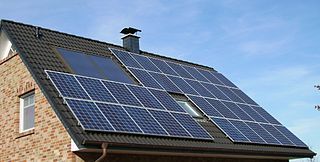From Guest Blogger Ken Madren: Tips to Design and Maintain a Green Building

To combat the tremendous amount of energy exploited by buildings each day, engineers and architects have developed the practice of green building. Several green building techniques focus on particular aspects of energy conservation, including water preservation, resource and supplies conservation, as well as overall reduced energy consumption. Through the use of specific construction materials and processes, the practice of green building can significantly reduce the impact humans have on the environment.
Eco-Efficient Design with Structural Insulated Panels
One such method used by engineers to reduce environmental impact is constructing buildings with structural insulated panels, rather than with traditional wooden latticework frames. These structural insulated panels, or SIPs for short, contain a layer of foam insulation sandwiched between two panels made of metal, cement, or plywood. Whereas a traditional frame allows for many permeable seams in the structure of a building, SIPs create an airtight, thermally-efficient environment that resists moisture and requires far less energy to heat and cool. In fact, the owner of a building constructed with SIPs can expect to save as much as 50 percent of energy costs.
In addition, the process of utilizing SIPs to assemble a building is much more streamlined and less wasteful than traditional building construction. Most SIPs are customized to each project in order to reduce on-the-job waste – the panels are shipped by the manufacturer to the construction site, where each wall is raised as a whole. Also, some SIPs do not contain HCFCs and CFCs, which are harmful chemicals that deplete the ozone layer and contribute to global warming. Furthermore, numerous SIP manufacturers either make their products recyclable or create them with recycled materials.
Resource Conservation through Eco-Friendly Equipment
Once a building contains a thermally-efficient, high-performance indoor environment thanks to the use of SIPs, there are still several green building techniques that can be used to reduce energy costs and overall environmental impact. For instance, photovoltaic arrays (more commonly known as a system of solar panels) can serve as a highly-efficient and eco-friendly source of electricity. Installing a building-integrated photovoltaic system has become an increasingly common practice in the construction of large structures due to the panels’ electricity-producing capabilities and because the system can replace other building materials, reducing construction costs as well as the need for resources. To determine the amount of energy a solar panel system will save, many factors must be taken into account, such as the building’s location, climate and the system’s ratings. However, any structure that receives at least part of its electricity use from solar power is undoubtedly benefitting the environment.
To further conserve natural resources, there are many specific appliances and fixtures in which building owners can invest to reduce the amount of water consumed on a daily basis. For instance, low-flow faucets, showerheads, and toilets will reduce superfluous water consumption. Additionally, building owners should regularly check for leaks, and caulk around pipes and plumbing fixtures to eliminate the possibility of unnecessary water waste. Installing low-flow appliances and an efficient system of solar panels reduces the need for natural resources and contributes to the effectiveness of green building.
Maintaining Energy Efficiency
Constructing an energy-efficient structure using green building materials, such as SIPs, solar panels, and low-flow fixtures, will effectively reduce a building’s impact on the environment. However, to maintain efficiency, building owners should perform energy audits each year to determine how energy is being consumed and to find out if unnecessary waste is occurring. Each individual associated with the construction of a building, whether a designer, engineer or proprietor, can help reduce the ecological impact produced each day as a result. As we further refine and perfect green building practices, we help to maintain a stable global environment.
About the Author
As the Chief Executive Officer at PermaTherm, Inc., Ken Madren manages the production and implementation of insulated metal panels and other building materials. He works with the leadership team to foster growth for the company and its associates, while providing cost-effective, durable structural insulated panels, panel accessories and attachments to its clients. Madren, who possesses a variety of experiences in business development, has a Bachelor of Arts degree from the University of Georgia. He spent many years working within the field of mergers and acquisitions, which aided his abilities to evaluate and lead based on differing management needs and market challenges. Additionally, Madren is an involved leader, applying his business management and marketing development skills to community service. For more information on PermaTherm, Inc., please call (706) 468-7500 or visit www.permatherm.net.
